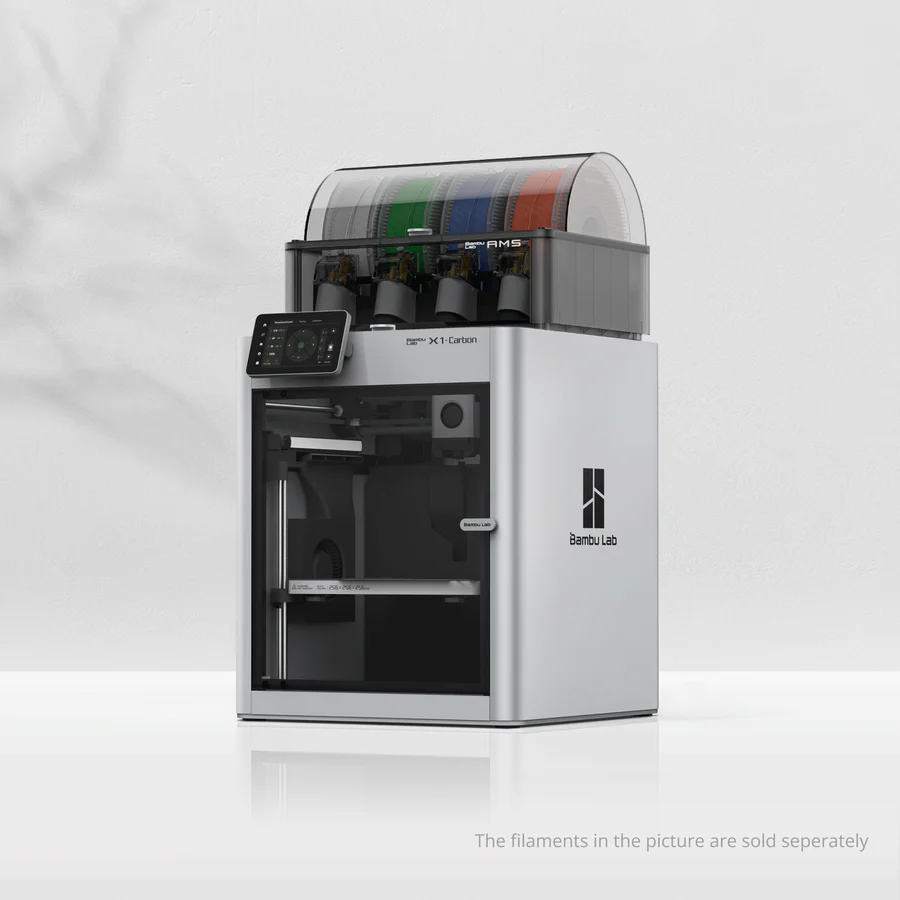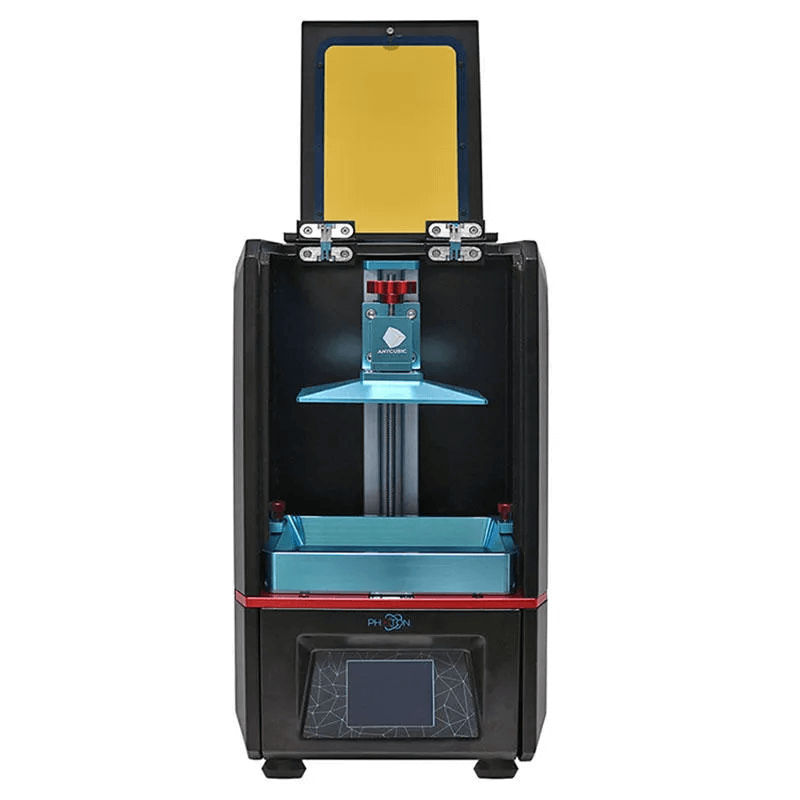Compare X1 carbon vs Photon
Comparison between the best 3D printers
Choose the best 3D printer at the best price. The cheapest 3D printers are here.
Buy a 3D printer here with 3D Fila.
 |
 |
|
| Model | X1 carbon |
Photon |
| Printing Material | Filament | Resin |
| Buy Filament for Bambu Lab X1 carbon | Buy Resin forAnycubic Photon | |
| Estimated price | $1449,00 | $100,00 |
| Manufacturer | Bambu Lab | Anycubic |
| Release Year | 2023 | 2019 |
| Print Volume [mm] | 256x256x256 | 65x115x155 |
| Printer Size [mm] | 389x389x457 | 220x200x400 |
| Weight [kg] | 14,13 | 7,2 |
| Power Loss Recovery | YES | NO |
| Maximum Resolution [mm] | 0,1 | |
| Processor | Quad ARM A7 1.2 GHz | |
| Display | Touchscreen 5'' | Touchscreen TFT 3,5'' |
| Power Supply | 350 W | 40W |
| Connectivity | Wifi, Bambu bus, Cartão SD | USB |
| Operating systems | Windows, Linux, Macbook | Windows, Mac, Linux |
| Date of registration in the system | 2024-04-10 | 2021-04-15 |
| Release date | 2023 | 2019 |
| Extra features | The Bambu Lab X1 Carbon revolutionizes 3D printing with stunning design, high print speeds, and a streamlined user experience. It stands out with its CoreXY system, a hotend capable of reaching 300°C, allowing for a wide range of filaments. Its LiDAR-assisted bed leveling system, vibration compensation, and AMS multicolor printing capability raise the industry standard. Print quality is impressive, with the ability to fine-tune for perfection. The X1 Carbon, with its closed build volume, not only promises but also delivers one of the most advanced 3D printing experiences available to consumers. | The Anycubic Photon DLP is a resin 3D printer that stands out for its affordability and quality. It uses DLP (Digital Light Processing) technology to cure resin layers with precision, offering resolution of 25-100 microns. Its build volume is 115 x 65 x 155 mm, suitable for modest-sized projects. It includes a 2.8-inch touchscreen, USB and SD card connectivity, and a carbon filter to mitigate odors. It is notable for generating efficient support structures through its custom slicing software. Although it requires care in resin handling and post-processing, it is an excellent option for beginners and professionals who want to explore resin 3D printing with high resolution and ease of use. |
| Support for multiple colors and materials (AMS and CFS) | YES | NO |
Notes * |
||
| Cost-benefit | 7 / 10 | 6 / 10 |
| Hardware | 6.4 / 10 | 0 / 10 |
| Tela | . | . |
| Print volume | 4 / 10 | 3 / 10 |
| Performance | 4 / 10 | 0 / 10 |
Conclusion |
| In conclusion, the comparison between the Bambu Lab X1 Carbon and Anycubic Photon highlights their distinct strengths and intended uses, catering to different segments of the 3D printing market. The X1 Carbon, priced significantly higher, offers a comprehensive suite of advanced features, including high print speeds, expansive build volume, and impressive print quality. It is particularly well-suited for users looking for versatility across various materials and complex prints, making it an ideal choice for professional and serious hobbyist applications. On the other hand, the Anycubic Photon shines as an affordable entry point into resin printing. While its print volume is limited and it lacks some advanced functionalities, it compensates with excellent print quality at a fraction of the cost. It serves well for beginners and those needing to produce detailed prints without the complexities of larger machines. Ultimately, the choice between these two printers depends on user needs. If budget and compactness are priorities, the Photon is a commendable selection. However, for those seeking cutting-edge technology and higher performance, the X1 Carbon is justified in its higher price point, offering greater flexibility and advanced features. |

